"Gator Bait": Section 1 of White Supremacy on Its Deathbed
Let's workshop this introductory section that explains the bleak position that white supremacy finds itself in and that sets up the guiding question: what might white supremacy still do to terrorize?
“Gator Bait”: Section 1 of White Supremacy on Its Deathbed
1. Gator Bait
We all know what white supremacy in its chilling heyday would do out of devotion to the torturous ruin of black kind: in our minds still smolder graphic images of gruesome ornaments dangling scarred from castration trees like warlock fruit, hard-R whites—trouser waist bands hoisted well above their belly buttons—cheesing in ear-to-ear self-satisfaction for the big-flash foldout camera as if posing next to the prize catch.
But to regrow the number and penetration of its tentacles to that of days halcyon in its eyes (days when postcards and cigar boxes and calendars casually bore images of black infants captioned with the phrase “Gator Bait”; days when it was no biggie to encounter ghoulish cartoons of grinning gators chasing spook-eyed black babies on tins of “dainty-morsel licorice drops” or on laundry products promising to “eat away the toughest discolorations”), what might white supremacy do from its deathbed today—an era when racism is considered chief among the discredited barbarisms of humankind and when the label “racist” cripples the soul, not to mention the chance for a career or a mate, more definitively than pretty much any other?
Focusing for now on American blacks (until it can summon enough strength to take on other game, game many university students in the West today would describe as “less-injured”), what desperate depths might white supremacy plumb in its quest for black devastation in a time when blacks are nowhere blocked from any opportunity as a matter of systemic injustice (let alone of institutional malice); a time when pro-black affirmative action has been the policy for over fifty years in a country that has made virtually every form of discrimination illegal and that defends the basic rights of all human groups; a time when—even before California’s “Ebony Alert” system was put in place—a missing black child marshals enough urgent compassion that government agencies and grass-roots collectives in every major city search by land, air, and water (yes, even if at the expense of back-burnering the many missing indigenous children); a time when national news anchors earn major social capital by mocking, live on air, statues of founding US presidents as “backward rapists happy to whip beautiful black bodies, which they stole from mother Africa to labor on stolen land”?
What moves does white supremacy have left in a time when across even its western homeland individuals, orchestras, football teams, universities, museums, governments pull out all the stops (as if—indeed, seemingly because—their lives depend on it) to showcase an obsessive commitment to antiracism (flying banners, pathologizing whiteness, making sure black people are overrepresented in almost every sector); a time when James Baldwin’s claim that white people know one thing if they know anything at all—namely, “that they would not like to be black”—is completely outdated now that, as heralded by the reams of wannabes in the 1990s (think: suburban “wiggers”) and the recent spurt of color-line crossers (think: Rachel Dolezal, Jessica Krug, and other coalmine canaries), more and more white people here would prefer, and actually try, to trade places (knowing damn well where the opportunities are, on top of having their whiteness long mocked effectively enough that they are even becoming sincere collaborators in the mockery)?
What hope could there be for white supremacy ever to rally again in a time where blacks (in many cases for almost a century) have been billionaires and prima ballerinas; lawyers and US Attorney Generals; chess grandmasters and doctors; America’s Dad (Bill Cosby) and America’s Mom (Oprah Winfrey); mayors and congressmen; US ambassadors and army generals; beloved national-news broadcasters and prime-time hosts; archbishops and CEOs; astronauts and US poet laureates; US Supreme Court justices and directors of science foundations; leads in the US opera and celebrated inventors; recipients of Pulitzers and National Book Awards and Nobel Prizes and Medals of Honor and Presidential Medals of Freedom and Academy Awards and MacArthur Genius Grants; US Presidents and Vice Presidents (who most people in the US would regard meeting as the crowning highlight of their lives); curators of a music-and-art culture that has become the dominant culture for all peoples across the globe—a time where blacks have even carved their mark on the Zamboni ice of the NHL)?
What room does white supremacy have to grow in a time when, as social media shows us (as surely as it does that gorillas and octopuses have rich inner lives), the cultural divide seems to cut deeper than the racial divide—so deep, in fact, that the southern Trump supporters, who haunt the nightmares of moderate right-wingers and antifa members alike and whose grandparents were as disgusted by miscegenation as most remain today about bestiality, embrace black people into the deepest folds of their ideological tribe (pro-life, law and order, Jesus, criticism about identity politics, worry about trans ideology being taught in grade school, concern about the stultifying effects of welfare programs, and so on) and would have little problem marrying and having legitimate children with Candace Owens and Stacey Dash and Alveda King and Star Parker, on the one hand, or with Jesse Lee Peterson and Clarence Thomas and Kanye West and Larry Elders, on the other hand?
What secret launchpad could there be for white supremacy to blast off from in a time when even Disney, the cardinal barometer of what ideology really holds sway in the US, has gone through great pains—often quite kitschy, no doubt—to signal sorrow for the historical oppression of black people and a desire to “do better” in the future and to “learn from black voices”:
putting disclaimers of “problematic content” on its various shows (like The Muppet Show), which in one “egregiously regrettable” case features Johnny Cash adorned with the Confederate flag);
attaching advisory notes of apology to its various films for showcasing “white appropriation and unacceptably racist depictions” (films like Dumbo, which features a minstrelsy musical number performed by a crow name “Jim Crow” and faceless black workers singing “When we get our pay, we throw our money all away");
blurring or drawing over or deleting “harmful scenes and characters” from its older productions (like some of the crow scenes in Dumbo or like portions of the “Pastoral Symphony" segment in Fantasia where a centaurette named “Sunflower” is shown polishing the hooves of the white centaurettes);
removing antiblack imagery from its theme-park attractions (like in the “Jungle Cruise” ride where Trader Sam is changed from a witchdoctor selling shrunken heads to a benign manager of the jungle’s “Lost and Found" and where—to dismantle the “abusive suggestion” that blacks sit at the lowest rung of the racial hierarchy—the rhino pole scene no longer depicts a black explorer being at the bottom of the pole that a group of explorers climb at one point to escape a rhino);
making sure to step up black representation into Wakanda territories way beyond just Tiana (Disney’s first black princess) when it comes to its artistic creations and business ventures on top of (a) pouring money into outreach programs aimed at acquisition of nonwhite talent and (b) trying its best to involve sensitivity consultants and black artists whenever the topics or settings or language concerns black culture (so as to avoid, in the very least, regrettable fiascos like The Jungle Book’s King Louie, who arguably presents a patchwork of black stereotypes);
teaching children about the key ideas in the antiracist movement, as in when one black character in the show The Proud Family: Louder and Prouder charges a white character with “white fragility” for “being defensive about race” and then hands that character Robin DiAngelo’s New York Times Best Seller, White Fragility (exact Random House cover and everything), directing him to turn to page 39 for some needed awakening;
participating in overt messaging about the dire importance of combating the continuing terror-reign of white supremacy, as in the “Juneteenth” episode of The Proud Family where various characters come together in a collective spoken-word performance about how black people are owed reparations because “this country was built on slavery (which means slaves built this country),” and about how black people “continue to earn reparations every moment [they] spend submerged in the systemic prejudice, racism, and white supremacy that America was founded with and still has not atoned for”;
compensating for its own sullied past, while doing its part to make up for the history of black persecution in the US, by coordinating various counter activities (from having employees read key figures in the antiracist movement like Ibram X. Kendi to organizing “reeducation retreats” filled with days of diversity workshops on microaggressions and implicit racism and the importance of patronizing black businesses and—most importantly—strategies to blunt the harms, and prevent the spread, of whiteness in both private and public spheres).
Beyond the intergenerational bigotry passed down in isolated southern locales (like Harrison, AR., a former sundown town featuring billboards like “It's NOT racist to ♥ your people”), where even the most insular residents—increasingly connected to the wider world through social media—still cherish their favorite black celebrities (LeBron James, Beyoncé, Denzel Washington, Oprah) and still welcome—even if with initial hesitation—blacks into their church congregations (especially if they support Trump) and still have enemies and scapegoats against which they are happy to unite with blacks (trans ideology in grade school, coastal elites smearing Trump, and so on); beyond the heavy-handed generalizations and racial slurs whispered largely behind the closed doors of northern cities (like Newburgh, NY) where black hypersexuality and hyperviolence and hyperundereducation and hyperwelfare and hyperaddiction ring loud and clear—beyond such meager showcases of deep-seated hostility toward blackness, what alchemy might white supremacy employ to rewind from the vanishing wisp it has become?
Beyond the gauche expectations we still hear at least in those towns whose furniture designs always remain about a decade behind (“Diani, can you teach us some hip-hop moves?”); beyond the tokenizing we still see in sororities (whose upperclassmen, wanting to avoid suspicion of racism, feel the chapter “could use a few more black faces”) and now even in more and more factions of the KKK, which—having drifted away from white supremacism, and instead toward the ideology that every race is entitled to feel proud of itself (even the “white race” it believes serves now as a fashionable target of hate and discrimination)—has become increasingly open to recruiting blacks, just as it did to recruiting Italians in the second half of the twentieth century, who share their core concerns (about, say, the national dangers of immigration) and core beliefs (about how, say, character should count more than color) and core agendas (about how, say, July should be White History Month, a month to celebrate notable figures like Goethe and Shakespeare, and to honor the overcoming of adversities faced by certain groups like the Irish, and to celebrate the philosophies and technology that allowed the US to exist)—beyond such feeble expositions of animosity for black kind, what sorcery must white supremacy invoke to breathe (let alone to retake the nation)?
Beyond the spitting mouths of desolate seniors, powerless in the face of looming oblivion, abusing black nurses with racial epithets (hurled, typically, more to sting in tantrum than out of any sincere sense of the inherent inferiority of blacks); beyond teachers calling upon a white student before a black student (in most cases today, if not merely random, a function of something as simple as the called-upon being more eager or, in the case of a teacher trying to draw the shy into the conversation, being less eager); beyond the rare rallies of Klan members, whom all but a few thousand of us consider more of a farce than scientologists and flat earthers and “Lil” rappers combined (yes, even when they actually reject black inferiority and merely peddle white pride and racial separatism, as is true of a growing number staunch about how harming blacks is as morally problematic as harming whites); beyond the occasional “Karen” pushing a slow-moving black kid out of a crowded elevator with a “Come on, kid” (more likely as a matter of impatience bolstered by ageism rather than racism)—beyond such relatively risible squawks of “total war against black bodies,” what more might white supremacy do to soar once again now that both its formidable wings have been fractured into fragments?
Beyond the employers with negative reactions to stereotypical black names like “La’Quantavia Johnson” (something that many employers compensative for—if not over-compensate for—and seems more likely to reflect class-bias than racial bigotry); beyond the Chinese ladies telling the black man with double-taking shock on their faces how impeccably he speaks Mandarin (a reflection mainly of how rare it is for outsiders to master the language); beyond the noticeable number of potential donors more reluctant to give money to black-male canvassers (a difference largely steered by “urban look” as opposed to skin color, especially when it comes to people in nonurban areas clued into the reality of overrepresentation in violent crime by black males with an urban look); beyond the empty and kitsch marketing signals of Target and Walmart during Juneteenth and Black History Month (a month that, although an important transitional measure like affirmative action, is largely unnecessary since black historical events and figures have been blended into year-round history lessons)—beyond such comparatively pathetic expressions of antiblack racism, what hidden reserves of underdog spirit might white supremacy draw from to escape its pummeled corner (where the towel, unless we are mistaken, already seems like it has been thrown)?
Beyond the sporadic store clerk, especially in areas of high black crime, being a bit more watchful through surveillance cameras and convex mirrors (a statistical caution, an understandable one, almost never born out of a sense that something sinister plagues an entire race by birth); beyond the diminishingly rare instances of black people’s pain threshold being overestimated by hospital staff (bombarded like us all by the thug and sapphire images so often glamorized in black media); beyond a relative handful of officers and judges who, especially given weeks overworked in precincts overrepresented in black crime, blur together black faces instead of looking at each face afresh (as, in fact, almost all these officers and judges, not thinking there is anything wrong with black people as an inborn fact, will sincerely admit they ought to)—beyond such relatively tame displays of antiblack violence, what more might white supremacy do to grow from the mere Ursula-polyp to which it has been reduced (prepared perhaps to make you’re-going-down-with-me kamikaze moves if only out of a sense that, likely to die off anyway, it has little left to lose)?


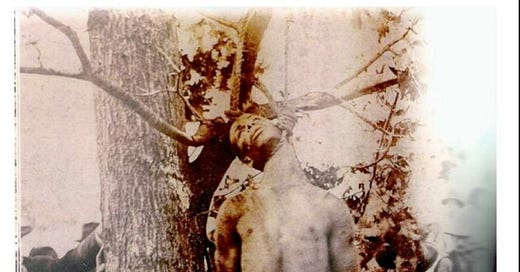



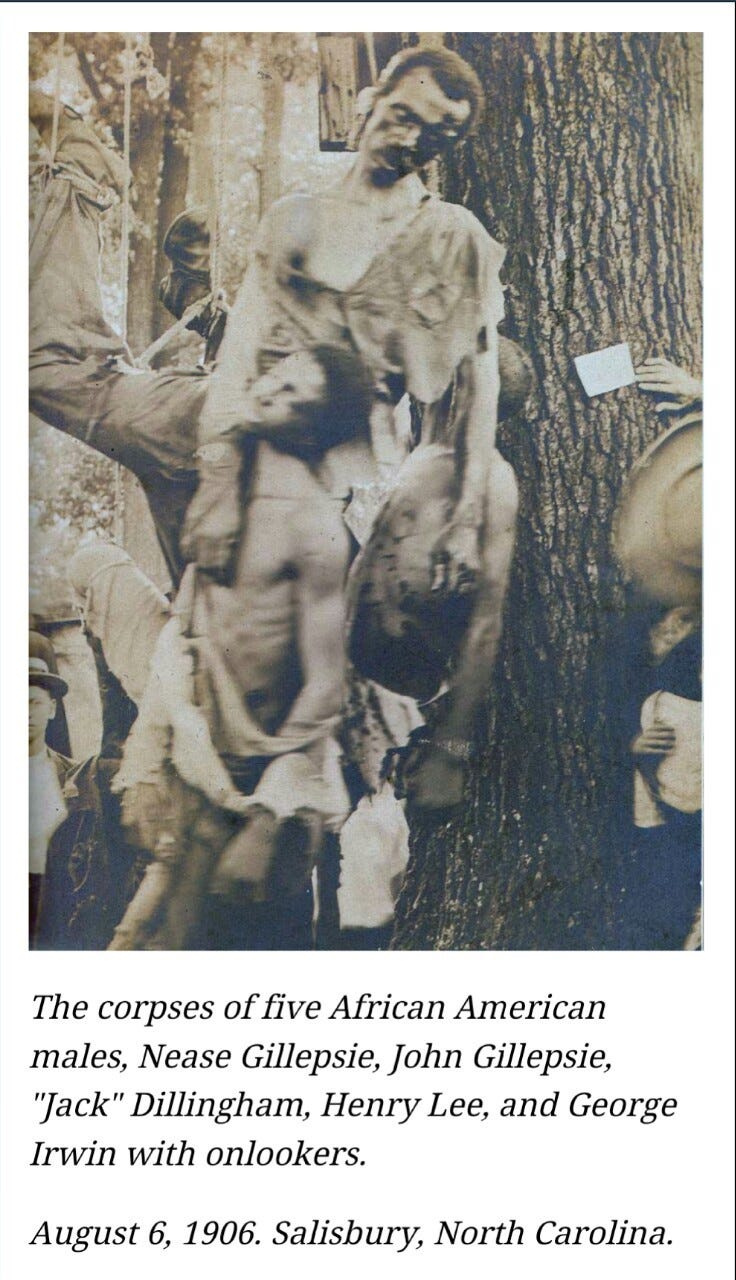
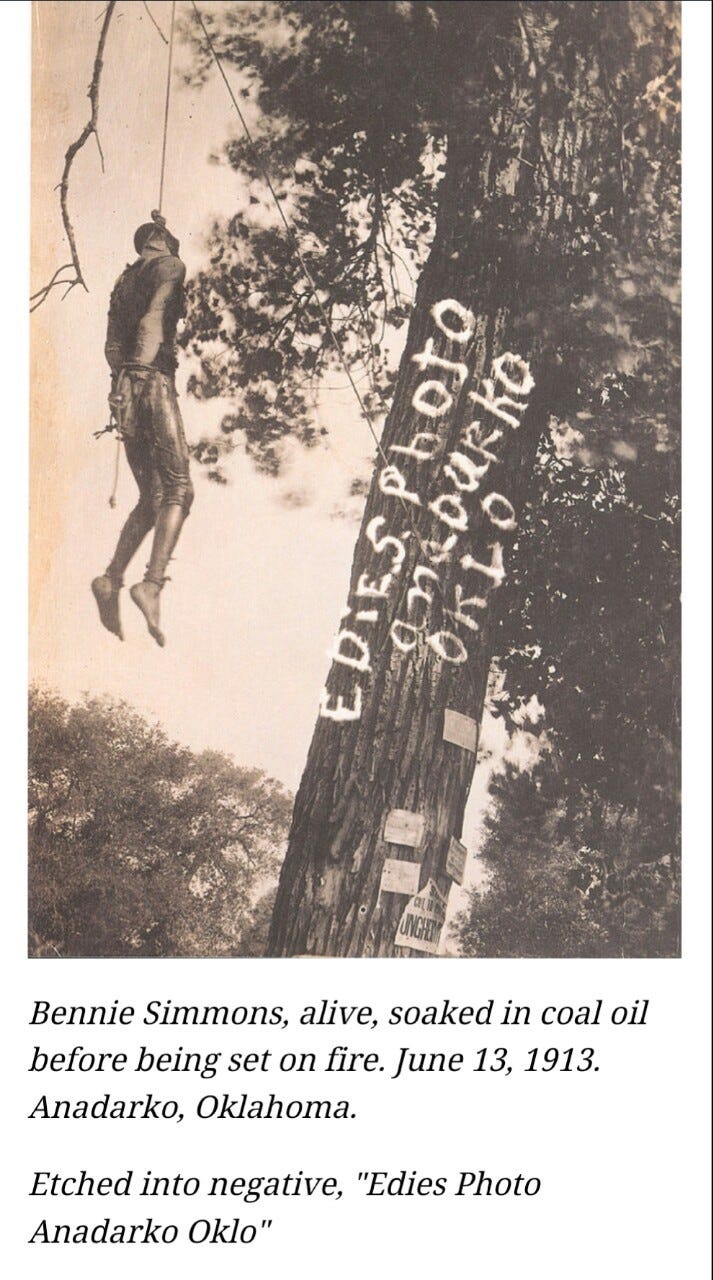
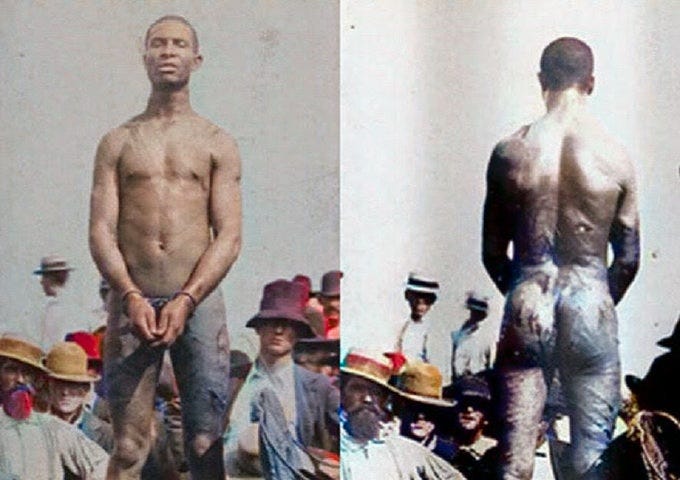
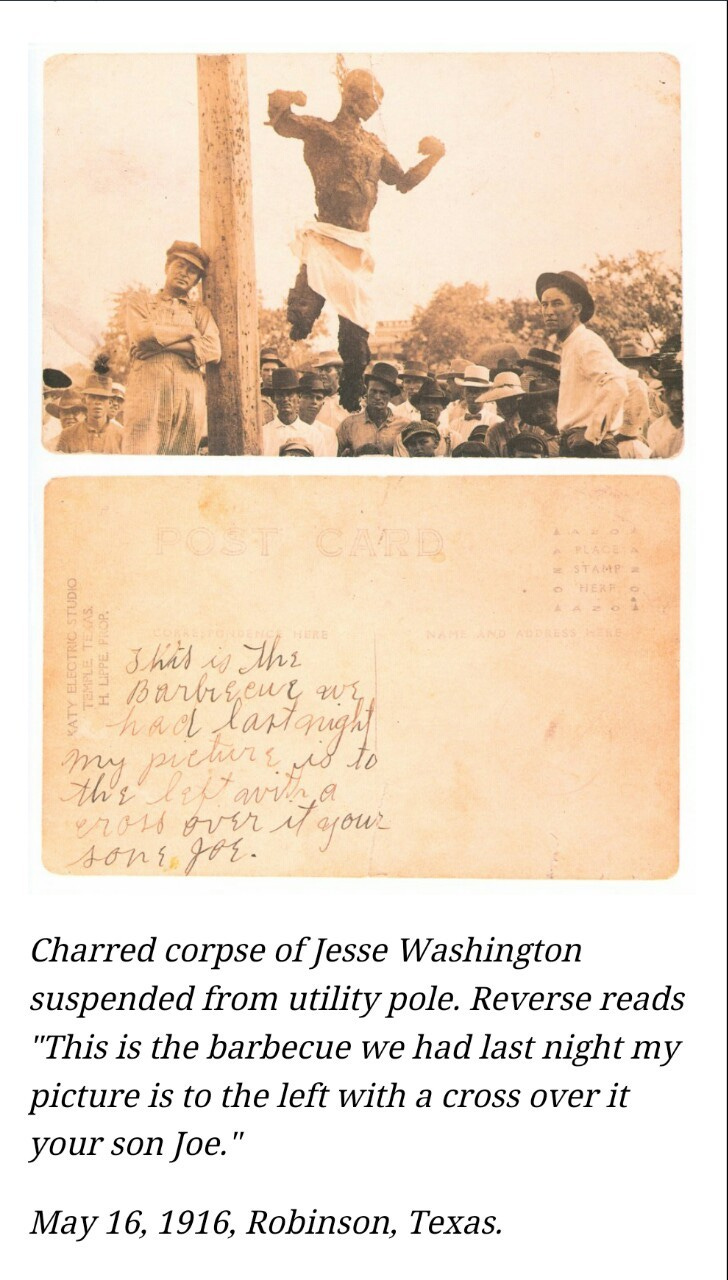
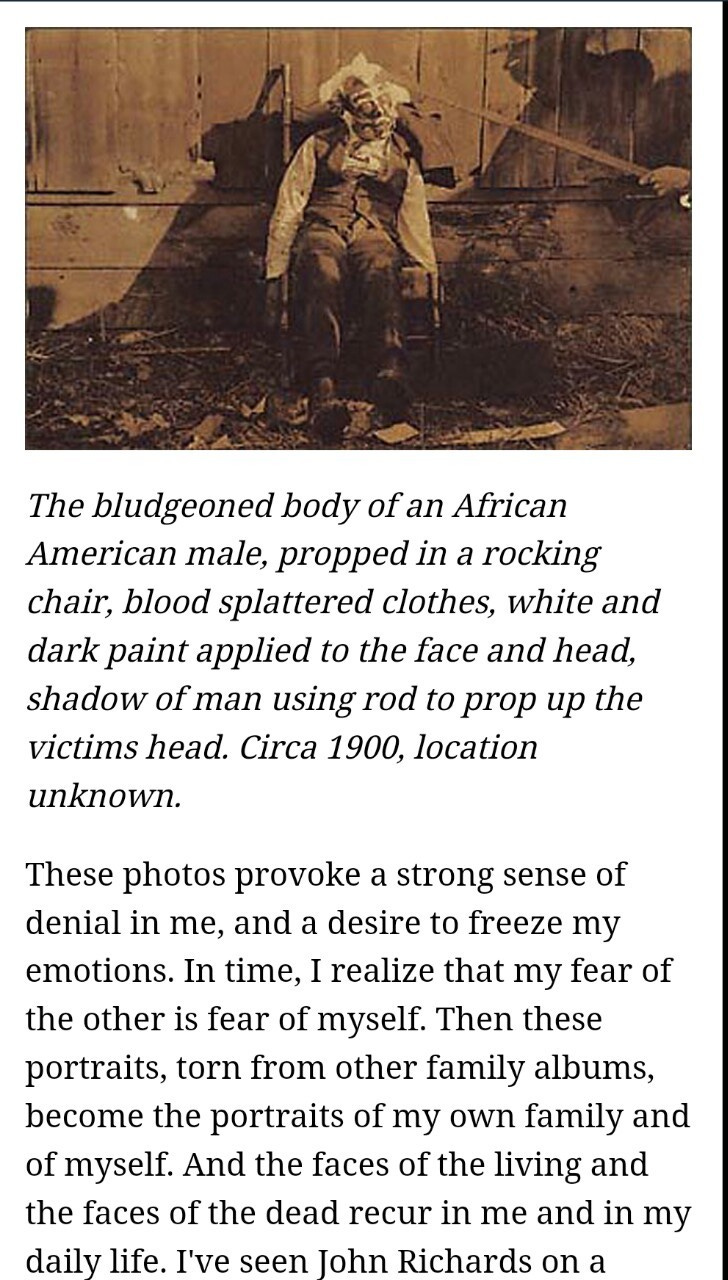
Masterful